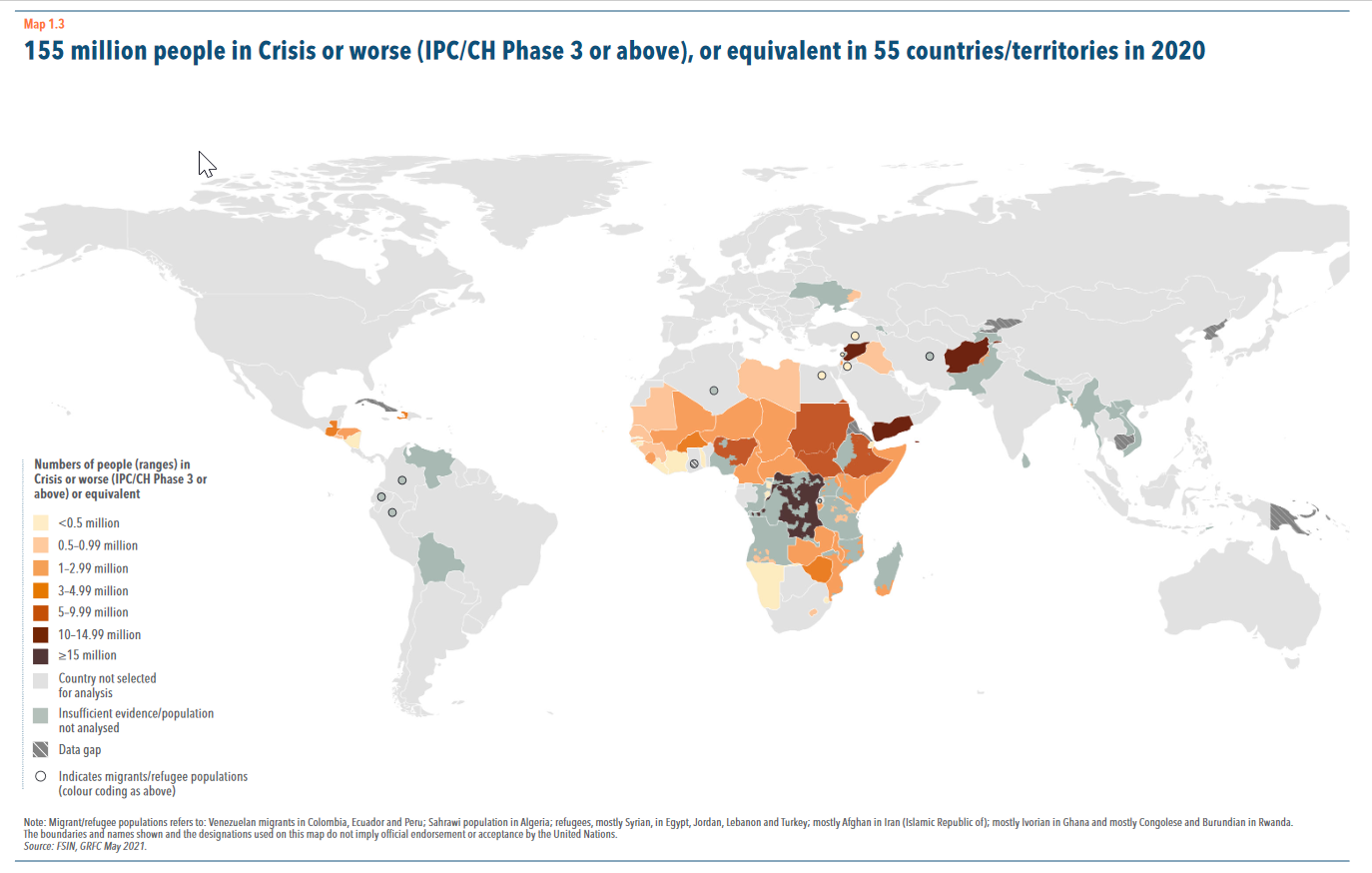Related blog posts
The 2021 edition of The Global Report on Food Crises describes that the magnitude and severity of food crises worsened in 2020 as protracted conflict, the economic fallout of COVID-19 and weather extremes exacerbated pre-existing fragilities. Forecasts point to a grim outlook for 2021, with the threat of Famine persisting in some of the world’s worst food crises.
The Global Report on Food Crises, an annual report published by the Food Security Information Network (FSIN) and the Global Network Against Food Crises (GNAFC) brings together data and analysis from various early warning systems to provide a reference for coordinating humanitarian and development responses to ongoing and anticipated crises. The FSIN is a global initiative founded by FAO, WFP and IFPRI. FSIN’s work spans the effort of 16 global and regional partners committed to improving availability and quality of food security and nutrition analysis for better decision-making. It facilitates the GNAFC in obtaining better understanding of the extent and causes of food crises. The GNAFC is an alliance of humanitarian and development actors united by the commitment to tackle the root causes of food crises and promote sustainable solutions through shared analysis and knowledge, strengthened coordination in evidence-based responses and collective efforts across the humanitarian, development and peace nexus.
Latest Reports
Global Report on Food Crises 2020 in times of COVID-19
This GRFC 2020 September update in times of COVID‑19 provides acute food insecurity data for 26 countries identified in the GRFC 2020 and also includes Togo in the report for the first time.
Global Report on Food Crises 2020
At 135 million, the number of people in Crisis or worse (IPC/CH Phase 3 or above) in 2019 was the highest in the four years of the GRFC’s existence. This increase also reflected the inclusion of additional countries and areas within some countries.
Global Report on Food Crises 2019
More than 113 million people across 53 countries experienced acute hunger requiring urgent food, nutrition and livelihoods assistance (IPC/CH Phase 3 or above) in 2018. This report illustrates in stark terms the hunger caused by conflict and insecurity, climate shocks and economic turbulence.
Global Report on Food Crises 2018
In 2017, almost 124 million people across 51 countries and territories faced Crisis levels of acute food insecurity or worse (IPC Phase 3 and above or equivalent) and required urgent humanitarian action. In 2016 the population in need of urgent action was estimated at 108 million across 48 countries.
